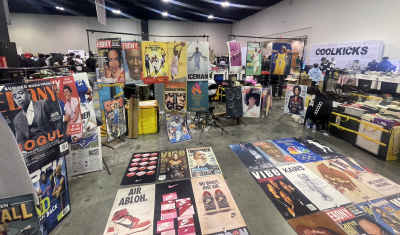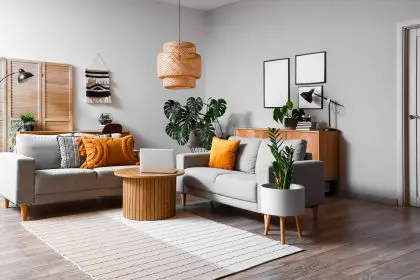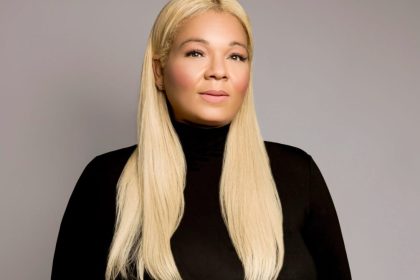Kim Hill has transformed from a pioneering musician to an innovative furniture designer whose work speaks volumes about heritage, authenticity and creative liberation. As the original female vocalist for The Black Eyed Peas and a collaborator with legends like Tupac and Biggie Smalls, Hill has always been a storyteller across mediums. Now, as the first Black furniture designer to partner with Bloomingdale’s, her chair sculptures under the Hazel and Shirley brand are redefining the intersection of functional art and ancestral storytelling.
How do your creative ideas move from being in your mind and heart into becoming tangible expressions like your designs and music?
I think my inspiration is always my lived experiences, and I think more than being an artist, I’m a storyteller, and even in the various mediums that I’ve grown accustomed to creating in, I’m always telling a story, I think it’s more my storytelling that comes from a personal experience that I try to really stay true to.
For those unfamiliar with design principles, how would you explain why design should be an essential element in both life and our environments?
I’m really serious about authenticity, and I feel design has to reflect you. It has to reflect your aesthetic and your creature comforts, your color ways, it has to resonate with you. That’s why when people talk about doing interior design, or taking on commissions for personal projects, you really have to get to know the actual person first, or at least ask the questions so that you’re able to best amplify their beat, so they’re surrounded by that when they’re in their home. It’s so very personal, but it should start with you and your particular design aesthetic and your likes. That’s my opinion, I always start from that.
What experience should someone expect when hiring you as their designer?
When I’m designing something for someone else, or I’m hired to do a commission, I take Kim Hill out of the equation, at least for the first phase. The first phase that person has to be front facing it has to be about them, and even sometimes pulling stuff out. I think part of why people hire people to design for them is they’re afraid or they’re nervous, or they’re not as confident around texture and design, or they walk into a place and they see what’s in the showroom, they see what’s in the window, they want to color outside of the box, but they feel like I’m a tone on tone person.
I also ask for things, like, what was your mother’s favorite color? What makes you happy when you put on a certain kind of thing? Are you like a red lipstick person? Are you like a more earth tone? So again, it really comes down to that person, anyone that asks for my opinion or gives me the pleasure of designing something for them, I’m really going to be pulling out their personal narrative to best, cause I don’t have to live there, I get to go home and be in my craziness.
It gives them permission to kind of break through some of the stuff, sometimes people are coming out of marriages where they’ve had to consider their spouse or their partner or their children. So sometimes they’re in a phase where they just want to do them, and they’re like, I’ve waited until retirement to explore wallpaper, or a cool lamp, but my husband or my wife was hesitant, so sometimes it’s about this kind of rebirth, so to speak.
How do you determine when it’s time to purge belongings versus when to add more to your collection?
I might be the wrong person, I’m a maximalist, that’s another thing. I help people kind of figure out their design style, because I’m a maximalist, which for people that may not know, maximalists tend to have a bunch of stuff on top of a bunch of stuff, we’re not afraid to combine patterns, colors, everything makes sense once it’s in the space. A minimalist is like tone on tone, whites and creams and grays, those are the kinds of things that come together or I like blue, so it’s all different kinds of blues, they kind of are more on a subtle thing. For me, I’m Luther, it’s never too much, so I need for the person to tell me where their line is, but I’m gonna try to take you there at all times. I’m going to try to pull you in a direction less traveled.
Could you describe the creative process behind visualizing and then creating a chair sculpture like the one you made for Bevy Smith?
I want to thank the legendary Derek Adams, I remember when Derek commissioned me for chairs, he said, “They’re not chairs or sculptures”. I don’t want to act all brand new, but he did give me a different way of looking at my furniture and it being multifunctional, and that some people are going to commission them for the sake of art, and less about it being this functional structure to sit on.
For Bevy, I asked her what her favorite colors were, and I always have a color chart, and she chose the colors. Some people, like Derek, was like I want you to just go crazy, I don’t want to give you any direction, and so I chose 3 different pieces of art that inspired me, Derek’s cool crossword puzzle, this other thing that he did that you see in a black barbershop, or you see the different hairstyles, like the Caesar, the box, the fade, and the color ways that he used in this, I used in one of the chairs and another one of his art pieces. I used colorways that were in pieces of art that have inspired me of his to create the pieces for him.
So I always try to bring someone into the story whether they know what colors they want, because they’re trying to incorporate it into a running theme or if they trust me enough to just come up with different colors that work, I always try to bring the person and keep them involved in the process, even if they don’t know it.
What inspired you to focus on chairs as your medium, and how does your work open new creative pathways for future generations of designers?
I am at that age, that intersection of life and living, where I’m right in that sweet spot right in that middle, and what inspired the chairs was, during Covid, we were being advised to shelter in place, and if you did have to have people over, be outside and I just not even been in this house quite a year when Covid hit. I’m in Newark, New Jersey, and no offense to Lowe’s and Home Depot, but I did not like the lawn furniture, and I certainly didn’t want the lawn furniture that everybody else was going to get.
I was sitting in my living room and looking in the dining room, behind me are these gorgeous, antique Indonesian chairs that I have had, there are 2 chairs, and they’re carved in this beautiful teak wood, and they’re woven, I guess I never noticed this intricate weaving, and I remembered these lawn chairs that we’ve had in our lives that my grandmother had bought for us, for my mom and her grandchildren, to sit in in the summertime, because I’m from upstate New York, where it’s always cold, and every summer we would clean out the garage, and we would paint the floor, and she’d take down the garage door, and she’d put up the screen and we would sit in these lawn chairs, and it was like we had this indoor outdoor space.
I called my mother, who I hadn’t seen since quarantine, and I asked her if she had those chairs, and she’s like you know me, I don’t throw anything away, of course I have the chairs, and I was due to see her in a week, and she said, I’m not doing anything with them, just grab them. There were 4 chairs, 3 rockers, and one Shay, and I brought them back with me as well as my mother, and I ripped out the vinyl. I didn’t know what I was doing, and I didn’t even follow the pattern of this work, my mom had taken a nap on the couch, and she she looked up and she goes, “oh, my God! What are you doing? This is incredible”. I didn’t know what I was doing, but I was nodding and weaving. I look back, and my weaving patterns, my technique was Garbaggio, it was really really bad, but I knew I was on to something.
About a week later, I was talking to a mom friend of mine, and I had my computer, I whizzed past one of my chairs cause I was bringing the computer outside to show her my chickens because her sister was raising chickens, and she goes. “What is that?” So I held one of the chairs up, and she said, “I’ll take 12, I want 4 for me and 4 for my 2 sisters”. They were in different stages of remission, she was a cancer survivor, one of her sisters was going through treatment, and the other was in remission, and that put me in business. Pictures that were taken of her particular chairs on her incredible outdoor space in a bomb four story house in Chelsea, she sent me the picture, I posted it, and another mom friend was like she had just opened a hotel in Queens, and she’s like, can you do 27? We need outdoor chairs for the deck, I’m like, I guess.
So the question, why chairs? They chose me, I really I didn’t think about the chairs, I was trying to see my first egg, and help my son through virtual learning, ripping my hair out, and they really saved me, it was a great emotional stabilizer to have something so tactile and so beautiful, right there, it was amazing.
Tell us about your journey from small-scale chair-making to becoming a featured designer at a major retail store like Bloomingdale’s.
We were chilling, it was Covid and it was that sweet time with my mom and my kid, 3 generations sitting on the couch, and it was a look on her face, which is why it’s called Hazel and Shirley, because my mom is Shirley, and my late grandmother’s Hazel, there’s a look on her face of my kid is gonna be all right, because I’m an old lady, but I’m her youngest, and it was kind of this spoken and unspoken moment of just she’s always gonna know how to do the next thing.
My mother, who will be 85 the same month I turned 55, didn’t get labeled the Textile Designer she was, but she’s a textile designer. My grandmother wouldn’t have been labeled the artist that she is, but she’s also an artist, and so many of our ancestors, they were pioneers, they were ceramicists, they were artists, they were engineers. It was that moment that I knew, I knew it wasn’t a game when the weaving was raggedy, I didn’t know where it was going to take me, but that’s not why I did it, I didn’t take it like I’m going to show up to the art scene, I knew because her eyes told me so.
So I think it comes down to those things chose me to tell stories and continue to tell stories about how powerful we are. Our indigenous footprint is everywhere, and now, more than ever in a season attempted erasure, I may not post 50 steps to like deal with the oligarchy, but it’s in my work. You’re going to feel it in the weaving, you’re sitting in my grandmother’s prayers, you’re going to feel it, and I think that that’s a big piece that my work offers.
So when you ask about being in a big store like Bloomingdale’s, they felt that, they don’t have to know what they’re looking at, they don’t have to write a dissertation, they felt it, and they sold out, too. So that makes me really happy, and to be the first black furniture designer carried in Bloomingdale’s, it means something and I don’t take it lightly.
As a trailblazer who has now created a whole new path, what would you consider your unique superpower or gift?
My son turned 15 and I was recording all these moments, as I listened to this audio that I had throughout the day, I was laughing and look, I don’t do much of anything quietly or subtly, I’m pretty loud, but I was listening to this laugh that was in all this footage just even kind of random stuff. It drives my son pretty crazy, but I think that that’s my superpower, that through it all I can laugh.
I feel like that’s my superpower, and being able to laugh and make other people laugh brings me joy beyond words, I can talk about the creative stuff, I can talk about, I can talk about my colors and all this stuff like this, but I feel my ability to make people laugh and kind of break up the monotony of life and “lifing” is a superpower because it is intentional.
What does being described as “eccentric” mean to you, and how does it relate to your authentic self-expression?
I’ve always known that the box of black femininity is a box that was not created by black women, and I’ve lived a life of constantly being asked to cram into this box, a lot of us have, no matter what you are, you’re a black man, you’re an Asian woman, you’re tall, you got crooked teeth. I don’t walk around the world like I’m a black woman, I’m reminded when I meet people at their level of discomfort.
I feel like this idea of being eccentric is this idea of understanding that this box that you created for me, I might conform to it. There might be times when that box is a great box to be in, and I might want to be in that box, because that’s where some really incredible people are, but I’m always going to color outside the lines, and I also make the crayons. That’s where my kind of eccentric tone meets the mainstream, and I’ve got a lot of company there. I’m not some unique rare bird, like you ain’t gonna meet nobody like me. Black women are multi hyphenate, talented, diverse, complex, simple, creature, come by on a Wednesday, you’re gonna meet a lot of me’s.
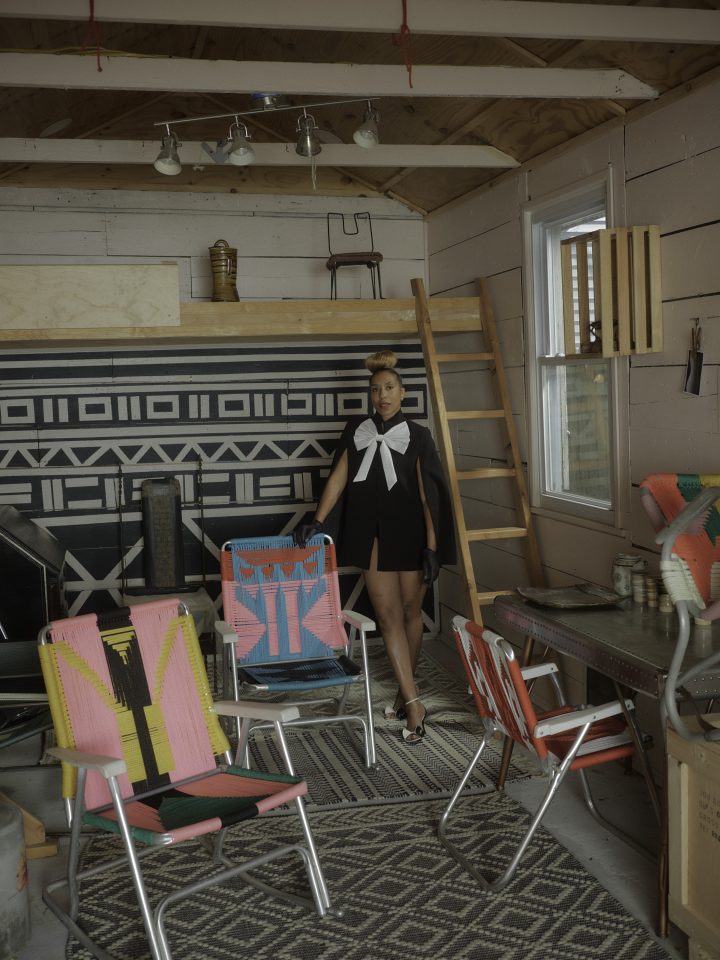
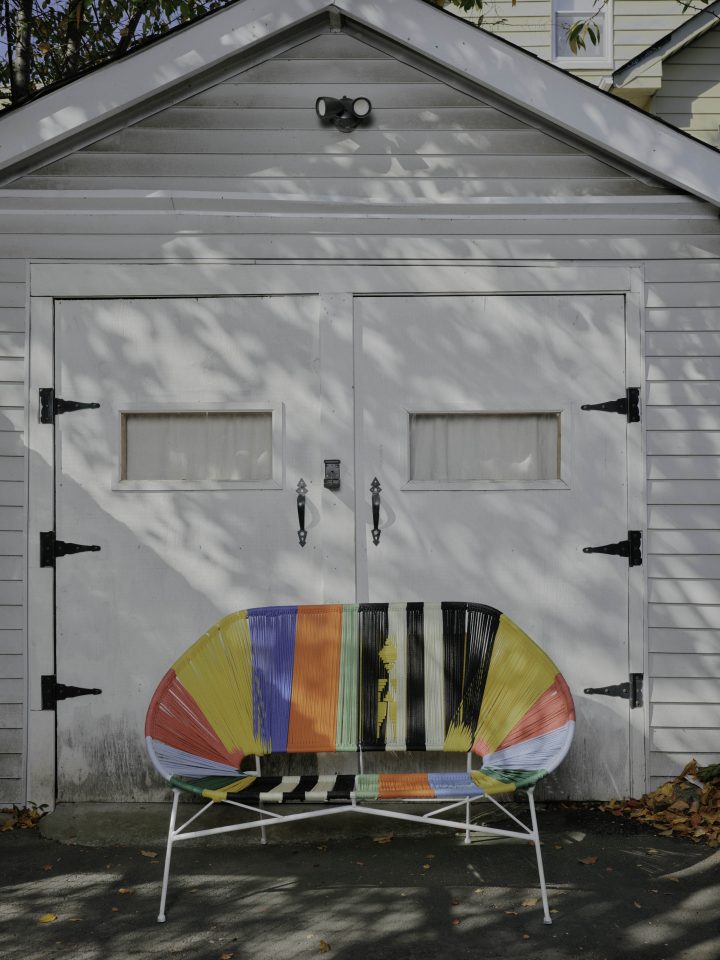
Photo credit: Mirada Barnes
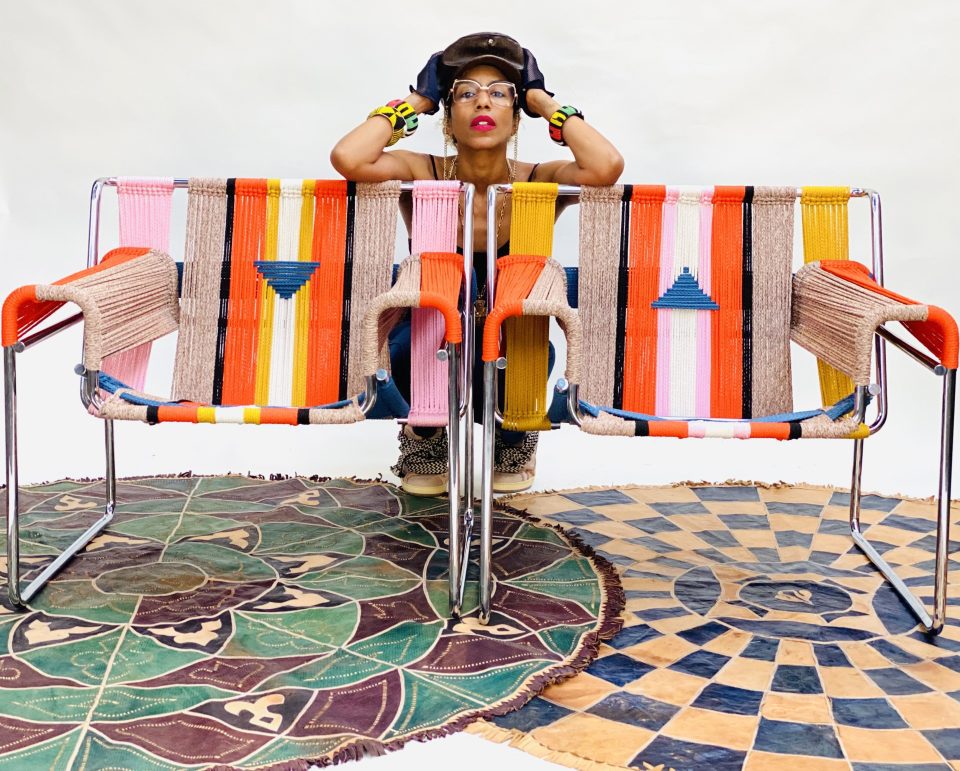
Photo credit: Cassius Hill
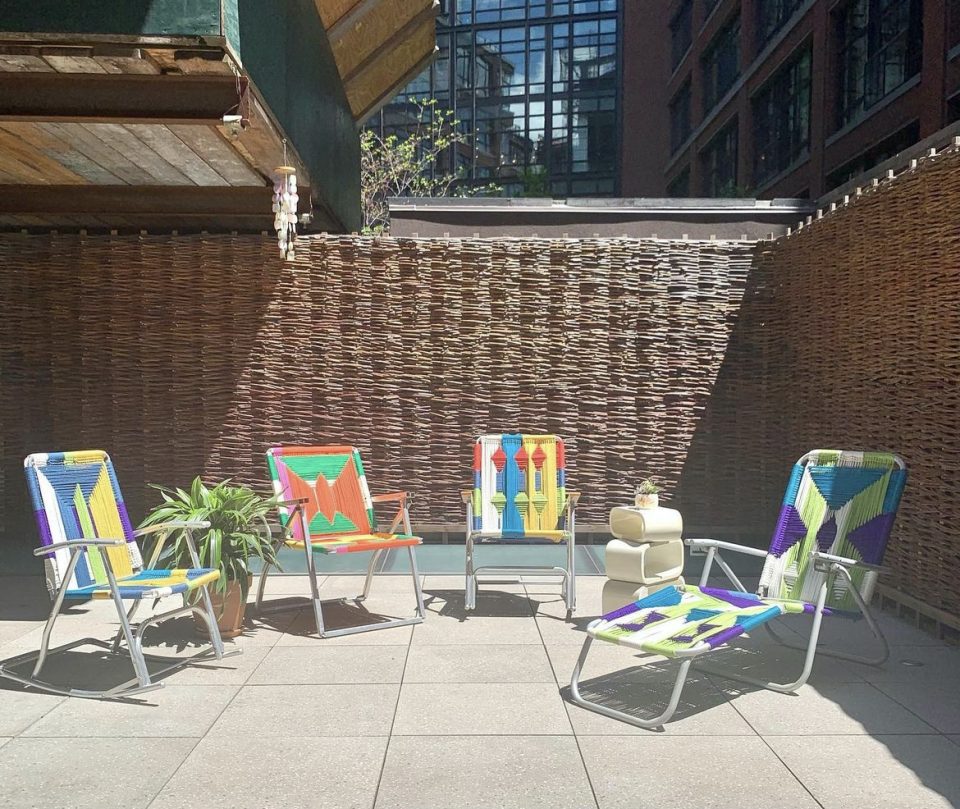
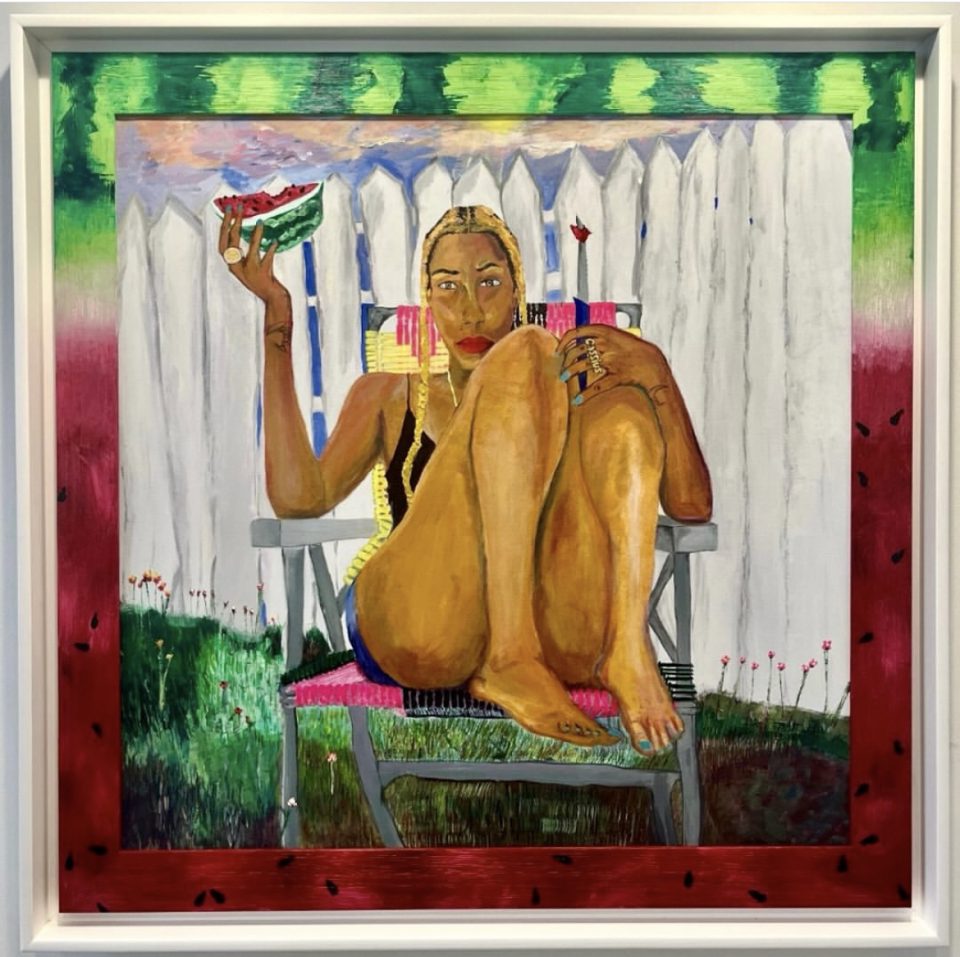
Acrylic and Oil Stick on Canvas Andy Warhol Foundation and PES Grant Recipient
36” X 36” (Photo courtesy of Kim Hill)
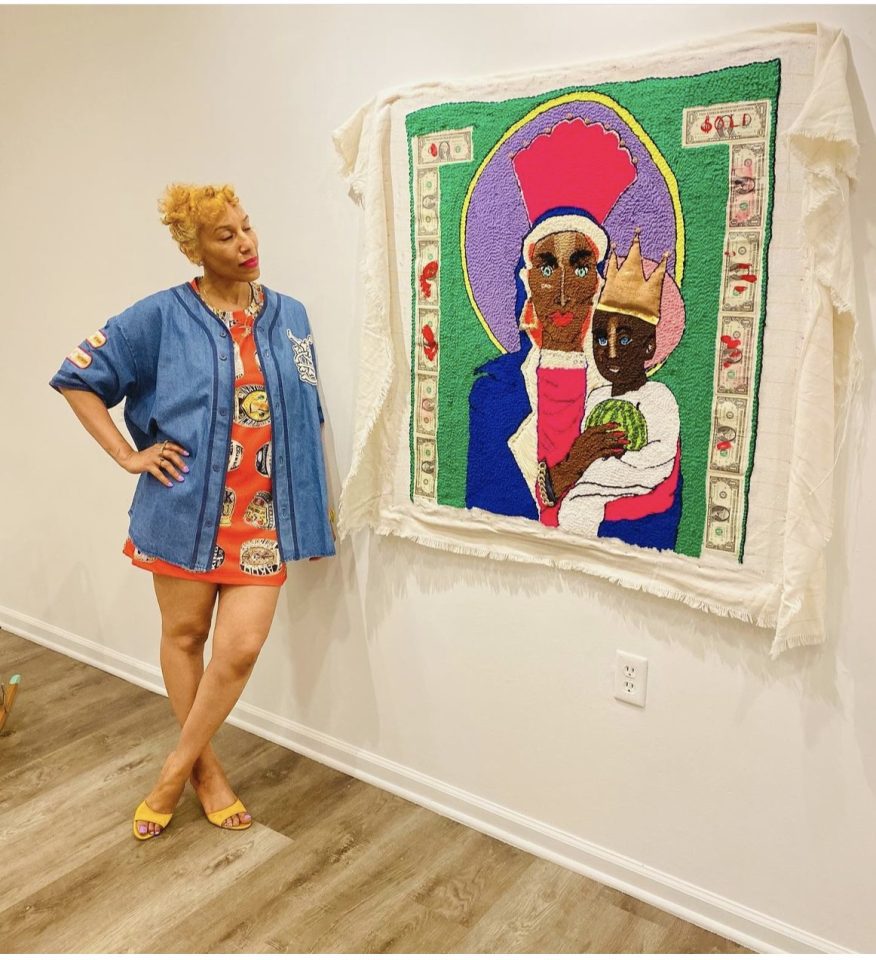
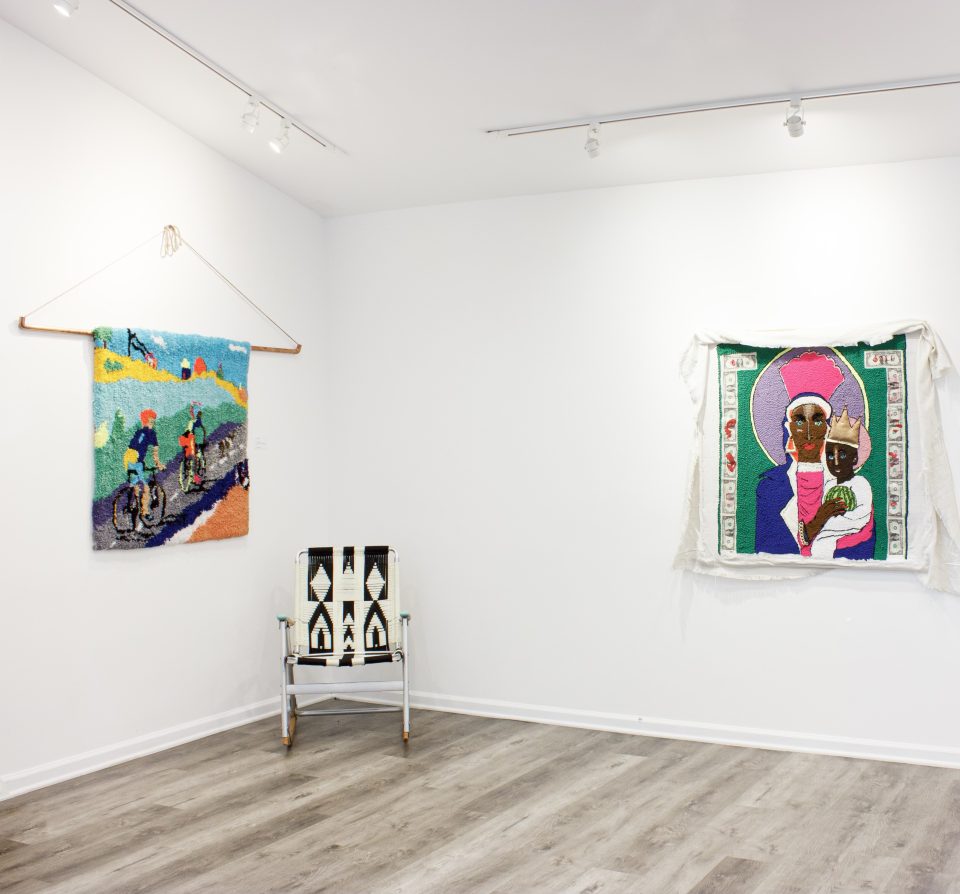
Photo credit: Diana Jean Puglisi
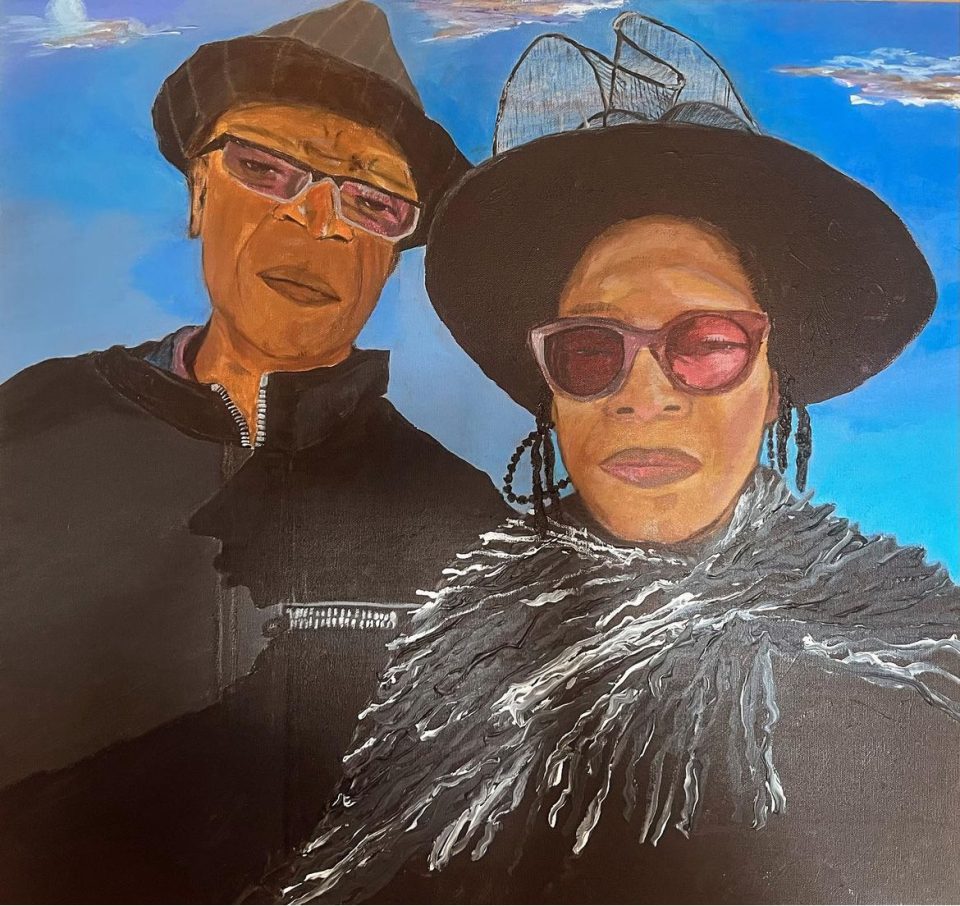
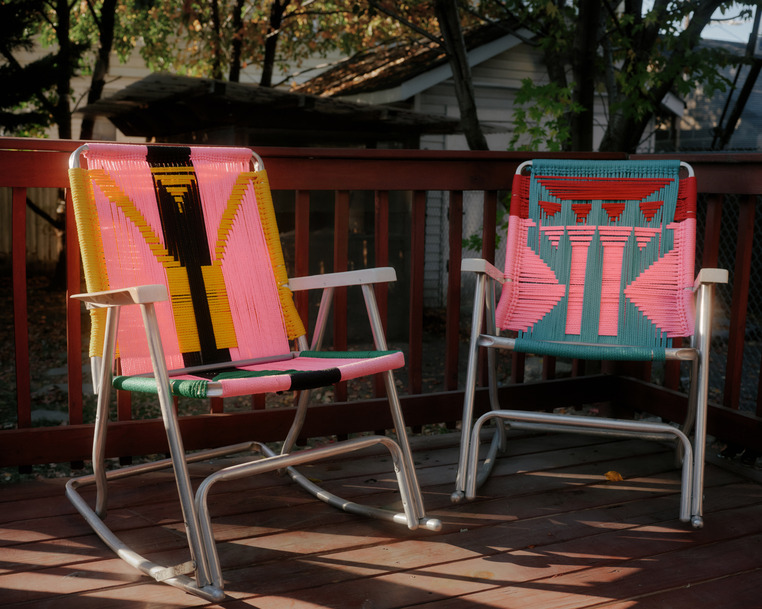
Photo credit: Mirada Barnes

